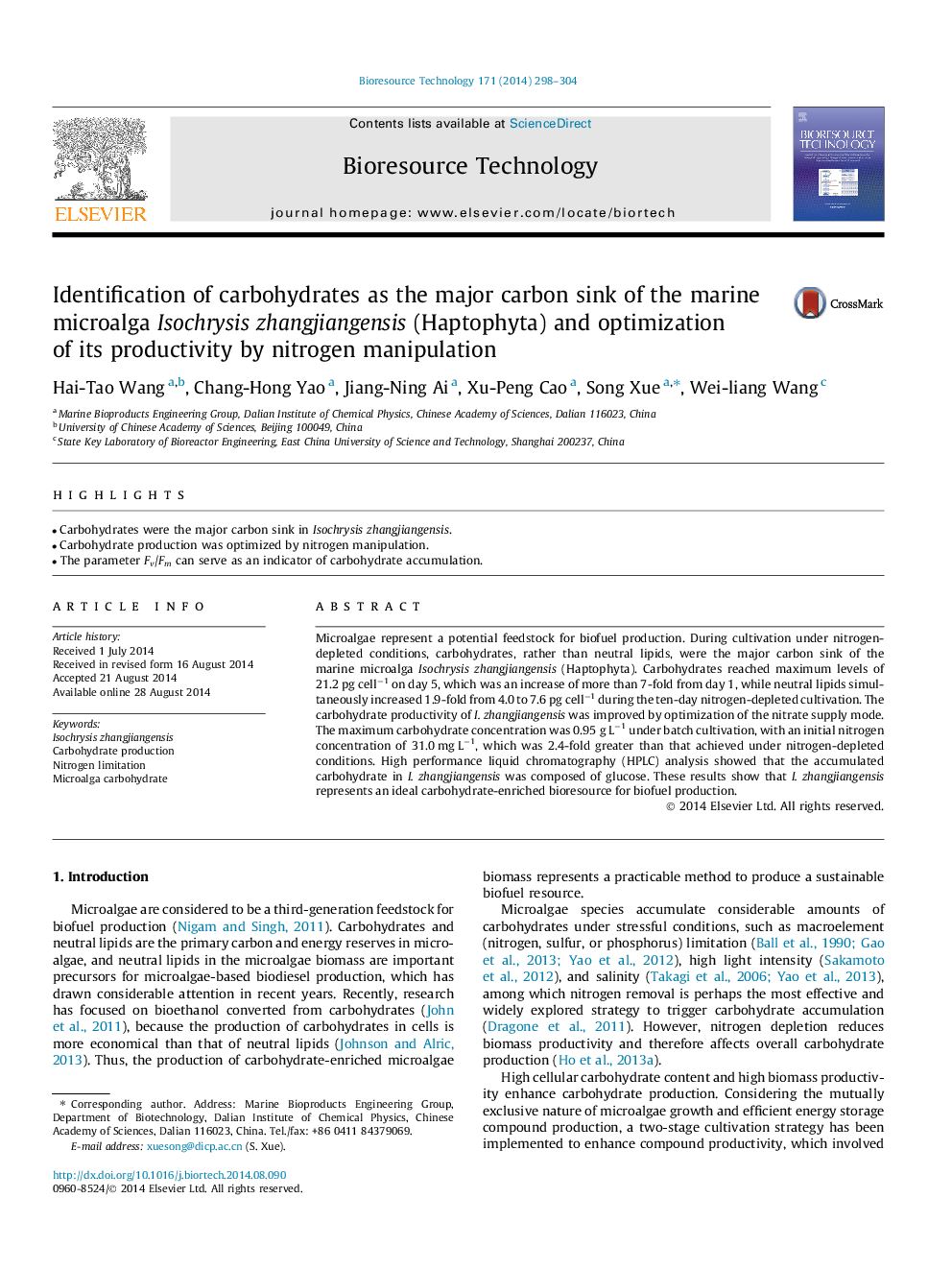| Article ID | Journal | Published Year | Pages | File Type |
|---|---|---|---|---|
| 680386 | Bioresource Technology | 2014 | 7 Pages |
•Carbohydrates were the major carbon sink in Isochrysis zhangjiangensis.•Carbohydrate production was optimized by nitrogen manipulation.•The parameter Fv/Fm can serve as an indicator of carbohydrate accumulation.
Microalgae represent a potential feedstock for biofuel production. During cultivation under nitrogen-depleted conditions, carbohydrates, rather than neutral lipids, were the major carbon sink of the marine microalga Isochrysis zhangjiangensis (Haptophyta). Carbohydrates reached maximum levels of 21.2 pg cell−1 on day 5, which was an increase of more than 7-fold from day 1, while neutral lipids simultaneously increased 1.9-fold from 4.0 to 7.6 pg cell−1 during the ten-day nitrogen-depleted cultivation. The carbohydrate productivity of I. zhangjiangensis was improved by optimization of the nitrate supply mode. The maximum carbohydrate concentration was 0.95 g L−1 under batch cultivation, with an initial nitrogen concentration of 31.0 mg L−1, which was 2.4-fold greater than that achieved under nitrogen-depleted conditions. High performance liquid chromatography (HPLC) analysis showed that the accumulated carbohydrate in I. zhangjiangensis was composed of glucose. These results show that I. zhangjiangensis represents an ideal carbohydrate-enriched bioresource for biofuel production.
